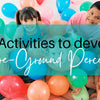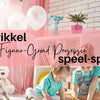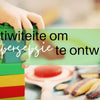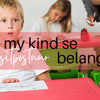Figure-Ground Perception: 10 Activities to support my child's development.

What is Figure Ground Perception.

Figure-ground perception is the ability to see an object in a busy background. This skill allows us to distinguish, segregate, isolate or find object's or stimuli in varying environments.
This can include faces, figures, objects, landscapes, and letters or numbers. Properly processing our visual figure ground helps to organize the information we see in our environment.
Why is Figure-Ground Perception Important?

Visual figure-ground perception allows us to pick up on details while ignoring unnecessary visual information. It is necessary for literacy skills, math skills, activities of daily living and the ability to maintain your attention to the task at hand.
If you have difficulties with figure ground discrimination you may find it difficult to find important words in text, copy words or read specific information on the board in the front of the classroom, maintain your visual attention for long periods of time, find objects in a particular place (i.e. keys or pencil in a bag), pick out numbers in word problems, etc.
Children with Figure-Ground difficulties may struggle with:
- Attending to tasks and concentrating when surrounded by a lot of visual stimuli.
- Finding objects in tray, on a table, on the floor, finding a particular piece to build a model from a pile of construction toy materials.
- Performing practical tasks, e.g. jigsaw puzzles, construction toys, sorting activities.

- Colouring and tracing tasks, dot-to-dot activities, finding the hidden object on a picture.
- Organising themselves and their work area, laying out work on a page, finding own book from a selection of books on a table.
- Keeping place when reading, completing a worksheet or copying work from a book or board, scanning adequately to find required information.
- Finding details in a picture or specific place in worksheet.
- Noticing all the relevant words in question, identifying keywords, completing all sections in written assignments.



Activities we can do at home or in the classroom.
- Describe an object in the room and ask the child to find it in the environment. - Start with big easily identifiable objects and gradually choose smaller objects. -
- Games such as "I spy with my little eye". Incorporate this skill in everyday tasks, ask the child to : - Find their blue T-shirt with the flowers on it or find all the matching socks in the laundry.
- Sorting Tupperware and finding their lids or matching socks when folding.
- Board games: Play Snakes and ladders, Monopoly, card games.
Where's Wally Books or Find the object type educational games.
- Pen and paper activities include: Paint by number: Paint the different numbers with their corresponding colours, start with 2-3 different colours and then increase the number of colours.
- Overlapping shapes- Ask the child to circle around the different shapes or colour in the different shapes in different colours.
- Find and circle pictures hidden in a bigger picture- Start with a simple background and make it more difficult by having a more busy and complicated background.
- Circle certain words or letters written in a text- Ask the child to find all the numbers that are the same, then letters, then words in the text by circling them or highlighting them.
- Word searches.
- REMEMBER: Teach organizational skills like scanning the page and working from left to right








